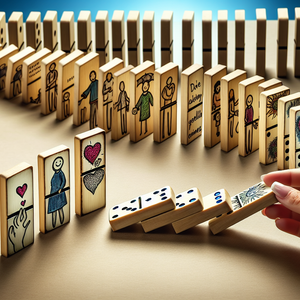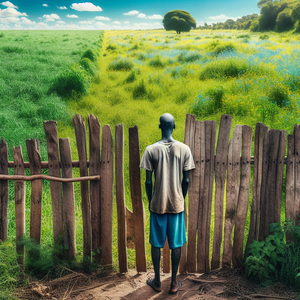The Intersection of Art and Science: The Role of Visualization in Medical Diagnostics

Visualization serves as a bridge that connects intricate medical data with comprehensible information for both healthcare professionals and patients. Advanced techniques, such as 3D imaging, augmented reality (AR), and sophisticated graphic representations, allow medical practitioners to interpret diagnostic information more effectively. For example, 3D models derived from imaging techniques like MRI (Magnetic Resonance Imaging) and CT (Computed Tomography) scans enable physicians to visualize anatomical structures in a way that enhances their understanding of complex medical conditions. This visual representation assists in surgical planning, allowing surgeons to rehearse procedures before making any incisions, thereby significantly reducing the risk of complications. Moreover, visualization is instrumental in educating both healthcare practitioners and patients. Medical illustrations and animations simplify complex medical processes, enhancing patient understanding of their conditions and treatment options. This clarity is particularly valuable in obtaining informed consent, as patients who grasp their medical situations are more likely to engage actively in their health care, which ultimately leads to improved health outcomes.
Careers at the Intersection of Art and Science
As the demand for effective visualization techniques in medical diagnostics continues to rise, new career opportunities are emerging that blend artistic talent with scientific expertise. Below are several key career paths that exemplify this intersection: 1. Medical Illustrators: Medical illustrators are artists who specialize in creating accurate and detailed representations of medical subjects. Collaborating closely with healthcare professionals, they produce illustrations for textbooks, journals, and patient education materials. A strong understanding of anatomy, biology, and medical terminology is essential for these professionals, alongside their artistic abilities. 2. Graphic Designers in Health Communications: Graphic designers are increasingly sought after in healthcare to create visually compelling content that conveys medical information effectively. They design infographics, educational materials, and digital content aimed at enhancing health literacy among diverse populations. Their work is critical in making complex medical information accessible to patients and the general public. 3. Medical Animation Specialists: These professionals utilize advanced software to create animated visuals that illustrate complex biological processes and surgical procedures. Medical animations are invaluable tools for training medical students, explaining treatment options to patients, and enhancing presentations at medical conferences. This medium allows for dynamic, engaging, and easily digestible presentations of intricate concepts.
Supporting Examples and Evidence
The effectiveness of visualization techniques in medical diagnostics is evident across various medical fields. For instance, in surgical planning, 3D printed models based on imaging data allow surgeons to rehearse complex procedures. A study published in the Journal of Medical Imaging found that preoperative 3D visualization improved surgical outcomes in orthopedic procedures by enabling better planning and execution. In the realm of patient education, a project by the University of California, San Francisco, demonstrated how animated videos explaining surgical procedures increased patient comprehension and satisfaction. Patients who viewed these animations were more likely to understand their treatment plans and feel confident in the procedures they would undergo, showcasing the tangible benefits of effective visualization in healthcare.
The intersection of art and science in medical diagnostics represents a fundamental shift in how complex medical information is understood and communicated. As the healthcare landscape evolves, the demand for professionals who can blend creativity with scientific knowledge will only intensify. Embracing the artistic elements of visualization not only improves diagnostic accuracy and enhances patient education but also leads to better overall health outcomes. For aspiring artists and scientists, the opportunities in this dynamic field are abundant and profoundly impactful. By marrying creativity with medical expertise, these professionals make significant contributions to patient care and the advancement of medical practices, ultimately shaping the future of healthcare in ways that benefit everyone involved.
Medical Illustrator
Medical schools, hospitals, publishing companies, and research institutions
Core Responsibilities
Create detailed anatomical illustrations for medical textbooks, journals, and educational materials.
Collaborate with healthcare professionals to ensure accuracy and relevance of artistic representations.
Develop visual content for patient education, enhancing understanding of complex medical conditions.
Required Skills
Strong foundation in anatomy, biology, and medical terminology.
Proficiency in traditional and digital illustration techniques.
Excellent communication skills to effectively convey complex concepts visually.
Graphic Designer in Health Communications
Healthcare organizations, non-profits, government health agencies, and educational institutions
Core Responsibilities
Design infographics and educational materials that simplify medical information for diverse audiences.
Develop digital content for websites and social media to enhance public health literacy.
Collaborate with healthcare teams to create visually engaging presentations for health initiatives.
Required Skills
Expertise in graphic design software (Adobe Creative Suite, Canva, etc.).
Understanding of health communication principles and target audience demographics.
Ability to translate complex medical information into accessible visual formats.
Medical Animation Specialist
Medical animation studios, hospitals, educational institutions, and pharmaceutical companies
Core Responsibilities
Create 3D animations and visualizations of surgical procedures and biological processes.
Develop educational videos for medical training, patient education, and conference presentations.
Work closely with medical professionals to accurately depict complex concepts in an engaging manner.
Required Skills
Proficiency in animation software (e.g., Blender, Maya, Cinema 4D).
Strong understanding of anatomy and medical procedures.
Creative storytelling ability to convey medical narratives effectively.
Biomedical Visualization Specialist
Research institutions, hospitals, medical imaging companies, and universities
Core Responsibilities
Utilize advanced imaging techniques (3D modeling, virtual reality) to visualize complex biological data.
Assist in surgical planning by creating detailed visual models from imaging data (CT, MRI) for preoperative assessments.
Collaborate with researchers and surgeons to improve visualization methods for better patient outcomes.
Required Skills
Experience with software for biomedical visualization (e.g., 3D Studio Max, ZBrush).
Strong background in medical imaging techniques and data interpretation.
Ability to communicate technical information effectively to non-specialists.
User Experience (UX) Designer in Healthcare Technology
Health tech startups, hospitals, electronic health record (EHR) companies, and digital health agencies
Core Responsibilities
Design intuitive user interfaces for healthcare applications, ensuring seamless interaction between patients and medical software.
Conduct user research and usability testing to gather feedback and improve design solutions.
Collaborate with medical professionals to understand their needs and translate them into effective digital experiences.
Required Skills
Proficiency in UX design tools (Sketch, Figma, Adobe XD).
Understanding of healthcare workflows and patient care processes.
Strong problem-solving skills and ability to empathize with users' needs.


